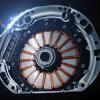
Breaking News
 Lidocaine poisoning deaths nearly triple...
Lidocaine poisoning deaths nearly triple...
 BrightLearn - Decentralization and Advocacy, an interview with Crypto Rich
BrightLearn - Decentralization and Advocacy, an interview with Crypto Rich
 Militarized Law Enforcement Reaches A New Level Under Trump
Militarized Law Enforcement Reaches A New Level Under Trump
 The New Gulag: Mental Health Detentions and the Criminalization of Dissent
The New Gulag: Mental Health Detentions and the Criminalization of Dissent
Top Tech News
 The mitochondria are more than just the "powerhouse of the cell" – they initiate immune...
The mitochondria are more than just the "powerhouse of the cell" – they initiate immune...
 Historic Aviation Engine Advance to Unlock Hypersonic Mach 10 Planes
Historic Aviation Engine Advance to Unlock Hypersonic Mach 10 Planes
 OpenAI CEO Sam Altman Pitches Eyeball-Scanning World ID to Bankers
OpenAI CEO Sam Altman Pitches Eyeball-Scanning World ID to Bankers
 New 3D-printed titanium alloy is stronger and cheaper than ever before
New 3D-printed titanium alloy is stronger and cheaper than ever before
 What is Unitree's new $6,000 humanoid robot good for?
What is Unitree's new $6,000 humanoid robot good for?
 "No CGI, No AI, Pure Engineering": Watch Raw Footage Of 'Star Wars'-Style Speeder
"No CGI, No AI, Pure Engineering": Watch Raw Footage Of 'Star Wars'-Style Speeder
 NASA's X-59 'quiet' supersonic jet rolls out for its 1st test drive (video)
NASA's X-59 'quiet' supersonic jet rolls out for its 1st test drive (video)
 Hypersonic SABRE engine reignited in Invictus Mach 5 spaceplane
Hypersonic SABRE engine reignited in Invictus Mach 5 spaceplane
 "World's most power dense" electric motor obliterates the field
"World's most power dense" electric motor obliterates the field
 The Wearables Trap: How the Government Plans to Monitor, Score, and Control You
The Wearables Trap: How the Government Plans to Monitor, Score, and Control You
"Artificial leaf" device turns water and sunlight into hydrogen fuel

The system is made up of a perovskite solar cell, hooked up to electrodes made of a catalyst that electrolyzes the water. When sunlight hits the solar cell, it produces electricity that powers the catalyst, which then splits the water into oxygen and hydrogen. These bubble up to the surface where they can be collected for use.
The sunlight-to-hydrogen efficiency sits at around 6.7 percent, which is relatively high for these types of systems. But the most useful feature, the team says, is just how self-contained the new design is. The solar cell and the electrodes are all in one unit – the solar cell components are encased inside a polymer shell that protects them from water damage while still letting sunlight through. The electrodes sit on the outside where they can split the water.



